粉丝4651获赞3.6万
相关视频
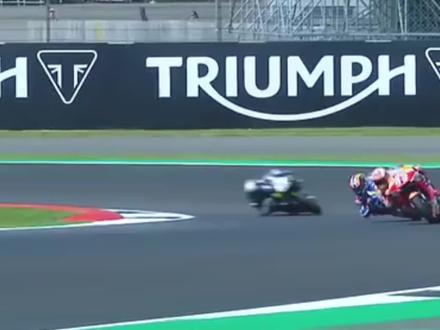 02:46
02:46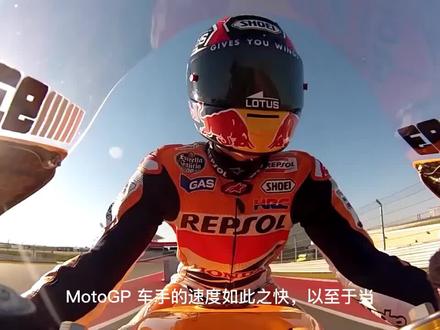 21:18查看AI文稿AI文稿
21:18查看AI文稿AI文稿motogp riders go so fast that when they come off their bikes they need the best protection mark marker's wears an alpine stars race suit so we headed to their factory in italy to see how to make a championship winning race suit so jeremy you are showing us around the factory today and we've come to the development laboratory at alpine stars to find out what happens with the testing of all the products before they go out to all the riders and drivers yes, indeed yes and we're at the moment at the impact test machine where we've got a back protector that would typically be used by eraser under their leather suit um we have to subject this particular protected to a number of different tests both in the development of the product and then to make sure it conforms to see certification which is based basically a normative standard which is designed to make sure that protective equipment is exactly that that it reaches a certain level so how do we test it is in this lovely machine what happens we drop a five kilogram weight from about a meter and we do a series of drops over the surface of the protector to measure the output that we get through a load cell underneath so we're really looking to measure the referred energy that comes through from each impact should we ever go test it out absolutely let's see how strong this is that is quite a force i wouldn't want that coming on to my back absolutely no way, but i suppose that is the point you've got to prove that it's ready to be put into a suit yes, the the test is very specific specifically set up so we know um exactly how much force is being um subjected to the protector and then how much transmitted energy we get uh and it's it's designed to make sure that there is a benchmark that we can measure again so we know for sure that this is going to pass the sea certification and more importantly if a rider has a big high side or slides into a curb or something like that that gonna be thing that is the number one priority and i just seen over your shoulder when when we just did that test a little green spike yes, it does indeed and we have a spike for the energy that was transmitted through the or the force that was transmitted through the back protector in this case just about five killing newtons um the maximum allowed is this red line up here, which is of 12 and the average of all of the impacts that we do really mustn't exceed the blue line here so we're looking good there well within the requirement there yeah that's perfect so what makes the baptitch is so strong well, if you'd like to come over and have a look we've got one on the bench that we can we can show you here it is okay so here we are so the protector has this hard outer shell um which is a polypropyle yeah that's nice and hot yep um obviously it's been opened up so it's not quite as riches as it would normally be, but you also see that it's designed to be flexible um obviously on a bike you know races are moving around a lot so we have to make it flexible and uh also make it breathable do they have uh the made specially for each individual rider um at a motor g p level we uh we make some changes to the fit um the materials are exactly the same as we would use in production um, we take the technology from racing and use it for production um, but yes, we make some uh modifications so that it fits the suit perfectly and fits that back perfectly yeah um, so underneath the uh a hard outer show we then have this uh visco elastic uh gel yeah um, but you'll see it's actually like a a memory foam um, i can compress it there and then about to come back yeah, it's also very flexible, but not in a in a particularly structured way it just moves with you and then slowly it will find its way back to a neutral position and these holes here for ventilation or just yeah ventilation for sure we have to give the riders as much ventilation as we possibly come through all of the layers of protection and apparel that they're using, but also for weight saving um as with just about every form of motorsport wastes a critical issue, so we thin out um cut out whatever, we can that's non essential uh to make sure that the waist is kept to a minimum obviously we have to achieve all the standards that we want to set um so there's no compromise on safety or performance, but we do make things as light as we possibly can well it looks good, it's light and it sounds pretty sturdy, i think i'd give that a gay if i was a motor gp ride at right what is next okay i think next, we'll look at leather abrasion testing perfect let's head of here right abrasion testing this sounds painful to army yes, well, it would be if if your hand was in there, but and it's already going so this can just be left running to testing yes, i mean this might be doing a ten thousand cycle test um you know whatever, it set up for particularly uh you know the type of technology we're looking to um to evaluate um, but essentially we go through an a known number of cycles using various different materials and this is testing the leather yes, this will test leather usually we use a specific grit sandpaper over a given number of cycles and then we can evaluate you know how much abrasion the leather is able to withstand so what have we got in here at the moment i can see pink pieces you can see yes, you can see sandpaper in here you can also see velcro testing um pads in here as well uh, so we do all sorts of material analysis in here it's not just leather um is for tax styles and kinds of uh materials that we use, but obviously for the purposes of motorcycle racing leather is the critical material absolutely and so when when it's finished at cycle you get it out you evaluate the leather to see which ones stronger, which ones perhaps not want to use yes, a whole range of different requirements really i can show you in here some sample oh my goodness some of these looking like they might not have been chasing exactly so this is this is a typical test 800 cycles on different samples of leather in this case of bovine leather so cow leather different thicknesses, but as you'll see the thickest one one point six millimeters was actually the worst result that's so weird because you expect it to be complete the other way around yes, the reason being that it's um very bright color so the pigments that will dies that have been used uh for the um uh for the leather surface treatment of obviously be very aggressive, so it breaks down the material properties of the leather um, so so if it had been left on its own it probably would've been a strong, but it's just those colors that have weakened um it's the colors that have probably weak in the leather um during the tanning process we're very specific about exactly what uh technology we want used in the processes that we want use so that we achieve the best possible result um in the in the case of these greens we still use them, but we've found other ways to introduce the colors in the leather so that we achieve good results like the anthracite rather than a failure like this especially with all the brands out there wanting their different colors yes, so it's quite a very difficult thing to get right yes, yeah perfect well, they we don't want to use those, but these look pretty good and we can leave the machine running and yes, we can leave the machine running head on to our next but a testing absolutely what's next up? i think strength testing is next we'll see how how resistant to some force the leather is it so the leather gets a serious workout we've done the abrasion testing and our this is strength testing yes, not any bit of leather in there, we've got a sample of leather in there this is our traction machine it's actually called a dynamometer and here in the jaws of the machine this sample of leather is now being pulled apart, oh my gosh, i can see it again oh very stretchy and finally it goes so that's just a break of the fibers yes, too much yeah, yeah, i mean it's natural fiber um obviously leather cowhide um so eventually you know it gives and um the strands actually come apart, but um as you'll see on the screen the uh, the actual output is pretty good, i mean for the standard of uh of leather that's you know that's a good tip top yeah, okay, so now we've tested the leather we've done abrasion, we've done strength we've done hitting the back protector do we start making the suit? yes, we'll go over to racing developments and look at the build of a suit and show you how that goes from beginning to a final full motor gpc okay, so we're in alpine stars racing development center um in the measurement bike yes, sitting on a bike well, we measure all of our riders in the riding position um, so this is the starting point really i mean obviously the suits have to work for while they're on the bike and we can refine the measurements once they're sitting on their actual race bike, but as a starting point we use this motorcycle dummy to uh to get the suits fitting near correctly, so the race suits made in the shape of being on the bike yes, yeah we we optimize the shaping of the suit so, that when they're on the bike they're comfortable the suits um are in that position so, there's no resistance um you know we we don't need to introduce any additional effort to the rider having to put the suit in the right position, so we we actually build the suit in position and also they move around a lot on the motorcycle, while they're riding so it's critical that they fit well and that there's plenty of flexibility in the suit so once they've been measured where do they go and what happens to the measurement well, if you jump off we'll go through to the development room and we'll show you how the process goes from here perfect let's go so you take all measurements and then i can see mark marquez is on here yes, well, this is actually our graphic department so this is where we start the the visual process um with a design for the suit um, so we can get a logo layout and the base color uh, pat and done um and from this we will sign off all of the sponsor logos positioning and the look of the suit uh and then when we've actually created suit obviously this is what we're looking for as an outcome so you're working very closely with the riders and the teams at this point yes, yeah, yeah absolutely in the teams obviously um work with their sponsors to make sure that everything is in line with the agreements they have um but yes we work closely with them because it's an integral part of make the makeup of the suit absolutely so when it's one on computer you can tweak bits here and there, and then i guess you've got to stop putting a pattern together absolutely like sewing yes and we'll go over here where the patterns are and the measurement details that we take all get fed into the 2d pattern making which happens on here yeah and indeed if you look on screen here, it gives you an idea of what what we have so there's very as parts of a suit on screen here they can be manipulated they can be changed, but the key thing is making sure that everything comes together as a final package extremely accurately and that we take what's on screen into reality and this is just like cad yes, this is a cat system um, so it will work out the solution for an entire suit all the different parts um once, we're happy with the individual parts we will do a print uh on a plotter um, so we get a a paper version and from that we can then make the cutting guides so then we go out into production and still using all that research and development you did back at the other base yes, yeah the feedback and the or the input we get from the laboratory defines the specification of the actual materials and can give us some good data on performance and things like you know in the case of fireproof suits, obviously the the performance in the fire cabinet for leather racing suits how strong the leather was, but also we look at breathability how much we can absorb moisture out away from the skin lots of performance aspects that go into the overall package so that's all on the computer yes, it's then coming over here comes over here there's a large plotter, i've never seen such a big printer in my life yeah well, we can do an entire patent on here and and that will very accurately lay out all of the parts of the suit and then once we've got the pattern we've go over to the digitizer so we just make sure that all of the reference points of each part conforming to what we had in the can system and that gives us the overall look and feel of how it comes together and then we go up to we go to layout here and in fact in this case, we've got part of mark marquez's suit a little bit of what market markets will be wearing yes, yeah this is now graphics on a cardboard base these are the cutting guides uh, which we actually used to um to to form the the leather panels um, but we've introduced the graphics onto the uh onto the outer surface so that we can see exactly how the fit works um with all of the details in each panel and so many pieces just to make up one suit yes, i mean there's a a lot of panels to each suit and then all the different individual layers and components as well, i'm going to talk about the aeration and the breathability can already see look yep yeah we can do suits at different levels of uh ventilation from almost no ventilation for wet and cold conditions through to you know seventy five eighty percent ventilation for the hot races and we're about to go to the malaysian grand prix where obviously you know conditions are usually very hot and humid so we'll do very ventilated suits for that and that's all feedback from the director again saying what they prefer yes we work with them closely because they all have individual preferences on those performance factors um we base all that we do for our customers ultimately on what we learn out of racing but um on an individual basis you know mark might want a slightly different ventilation level to to danny or horhae or um so yeah we will work with them particularly to find out what they each individually want now i'm guessing this becomes leather that will become leather yes, we had from here out into the build area okay, right through this door here step, wow! come here! so where do we head to in here? okay, we're gonna head down to leather cutting and we have to the right here all of the component makeup for the suits and then down the left hand side the actual production line where we build the suits but the process for the physical material starts here wow look at that good leather so in fact they're working on a suit here and the cutting which is actually a very skilled job knowing how to use a leather hide we still do it by hand for racing because this is the most accurate way to do it so the cutting patterns that we saw being created in there are actually being used here to create the guides the one of the cut so it's important to make this little marks i guess we're attaching to other pieces yeah, those are the reference marks so that we get everything absolutely in the right position as i said are the tolerances that we work to a very very fine every suit should come out exactly the same until we make a conscious effort to make an update or a modification that is unmovable wow, every single liter that is one piece of a race suit yep gatsy that is amazing wow! okay! so that's the pieces of leather yep and once we have all apart yeah we start the work of sewing them together and that's taking place over here there's a suit in progress here and then also we have one of marks suits mark mark as his suits that's ready for the final parts of the process actually the attachment of the the shoulder protector yeah that's pretty hard so that's going to be inserted onto the shoulder section and we can watch that name done, so that's sticky i can't believe that this is gonna be inside mark marquez's race suit when we see him racing next this is amazing that's came through the rubber through the polyurethanium that is one strong needle。 别担心, just fascinating in the average race suit we're using over a mile of thread a mile of bread oh my goodness wow, that'll be racing out of track somewhere soon yes, absolutely yeah thank you so much for showing us that that's awesome awesome so we'll get the other one put on and then we can do some of the final fitting over in the finishing section print okay, so we're now in the final stages of the suit build um and in fact the airbag system is being inserted um we're starting with the uh sensor wires that are distributed around the suit um they are put in first um now one of the airbags uh and the left shoulders just being inserted as well we are going to have an exclusive behind the scenes video about airbag technology coming soon on the channel so keep an eye out for that now that it's all installed they will then put the inner liner in and the comfort liner that will be installed and then we put the final external sliders on the knee sliders and then the elbow sliders thank you very much racing red for markers and this is purely a comfort thing yes, this is the inner comfort liner it has some soft padding through it it also means that this can be removed after each session and dried out or washed or very important he's all zipped up okay, so the marks become pretty well known for his yes, this is uh the elbow sliders have become a little bit of a signature really, he's he's actually not the only rider that we have who uses them, but um he has become renowned for the dragging his elbows um unlike all of the rest of the riders obviously knees as well, yes, look at these check us all good yeah that is one finished race suit and what's now left to do now normally we would remeasure the suit just to ensure that all the measurements that came out and computer actually what exist here how did he is we put it up on the wang scan and then once we've recorded that then we put the protective cover on it and it's ready to go smart let's go racing and that is how you build a moto gp suit。
18爱乐机车骑行装备 06:00
06:00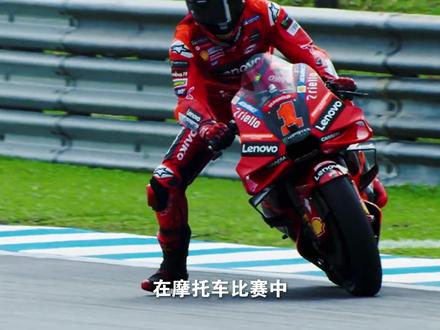 04:30
04:30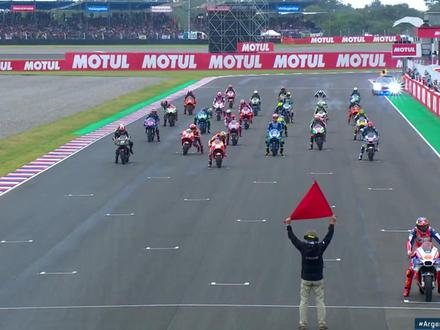 04:21
04:21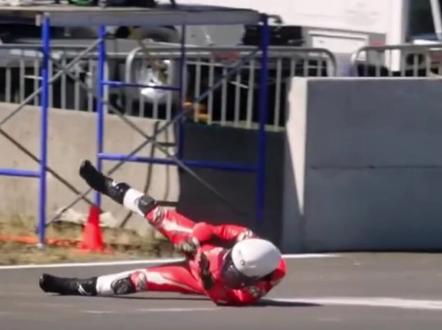 00:17
00:17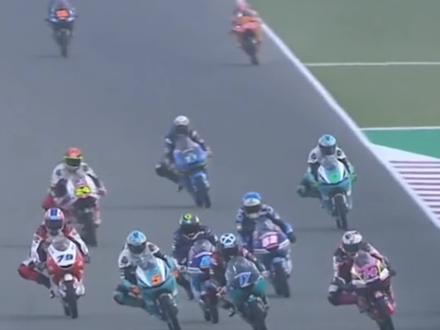 00:21
00:21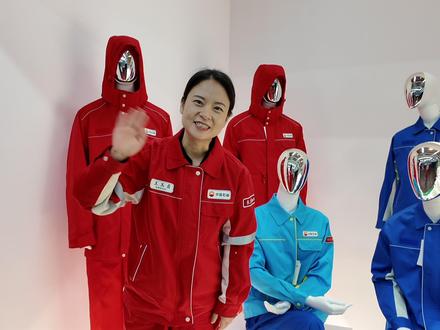 02:51
02:51









